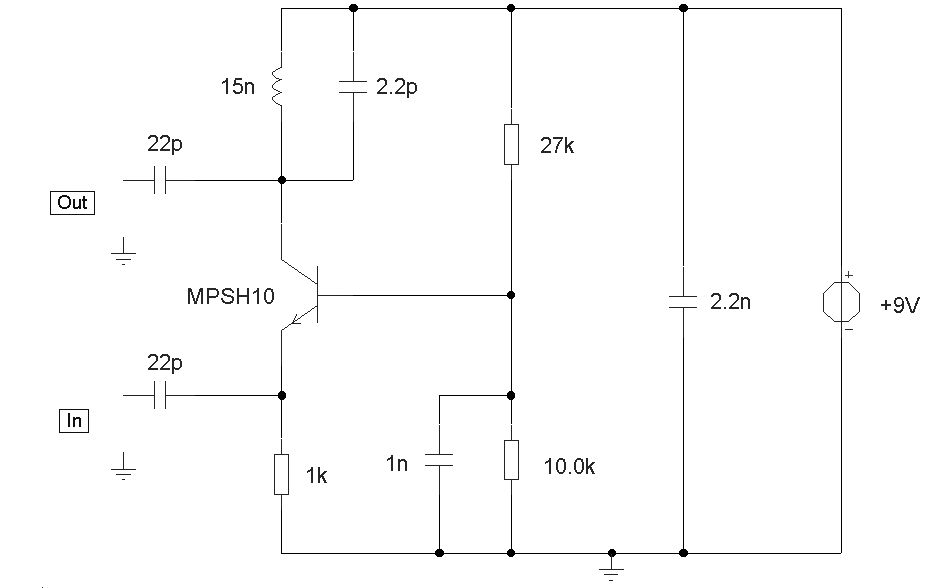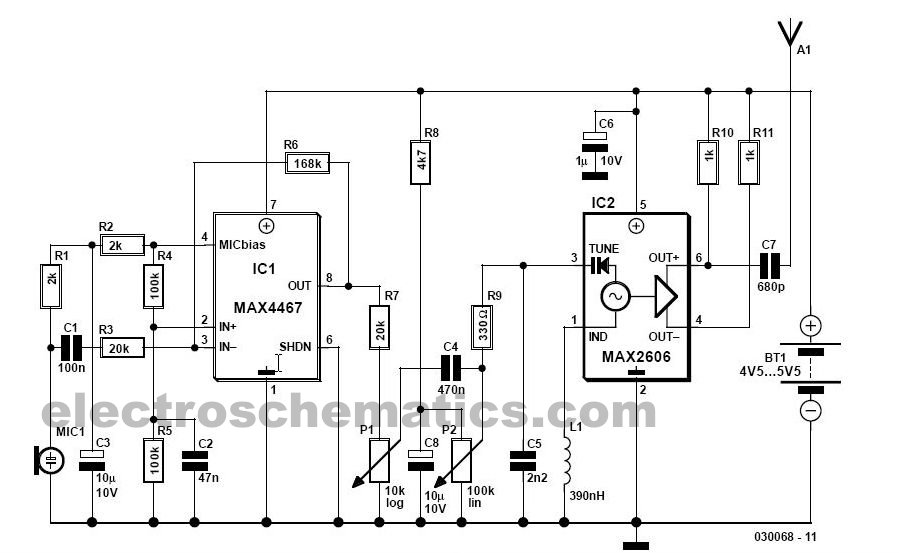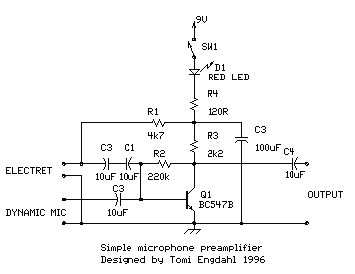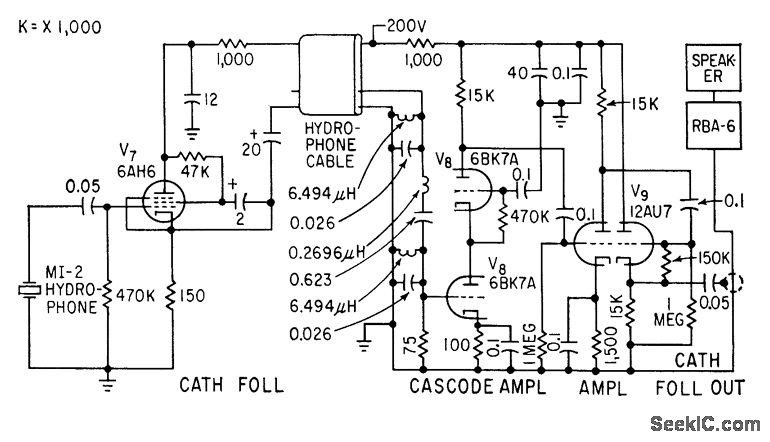
OP27 Fixed Gain Transformerless Microphone Preamplifier
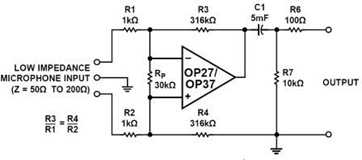
A simple but effective fixed gain transformerless microphone preamplifier circuit diagram is shown in the picture below. The circuit amplifies differential signals from low impedance microphones by 50 dB and has an input impedance of 2 kOhms. The OP27/37 operational amplifier helps to preserve bandwidth due to the high working gain of the circuit. If the microphone needs to be unplugged, a dummy resistor Rp may be necessary (source: analog.com).
The fixed gain transformerless microphone preamplifier circuit is designed to efficiently amplify low-level audio signals from microphones without the need for a transformer, which can introduce noise and reduce signal fidelity. The circuit achieves a gain of 50 dB, making it suitable for applications where high sensitivity is required, such as in professional audio equipment and recording studios.
The input impedance of 2 kOhms is optimal for interfacing with low impedance microphones, allowing for minimal signal loss and ensuring that the microphone operates effectively. The use of the OP27 or OP37 operational amplifier is crucial in this design. These op-amps are known for their low noise characteristics, high gain, and wide bandwidth, which are essential for maintaining audio quality throughout the amplification process.
In scenarios where the microphone may be unplugged, the inclusion of a dummy resistor (Rp) is recommended. This resistor provides a load for the circuit, preventing potential issues such as oscillation or distortion when the microphone is disconnected. The value of this resistor should be chosen carefully to match the characteristics of the microphone and the preamplifier circuit.
Overall, this transformerless microphone preamplifier circuit is an efficient solution for capturing high-quality audio signals while minimizing the impact of extraneous noise and maintaining signal integrity.A simple but effective fixed gain transformerless microphonepreamplifier circuit diagramin the picure below. The circuit amplifies differential signals from low impedance microphones by 50 dB and has an input impedance of 2 kOhms.
The OP27/37 operational amplifierhelps to preserve bandwith because of the high working gain of the circui t. If you need the microphone is to be unplugged, a dummy resistor Rp may be necessary (source: analog. com) 🔗 External reference
The fixed gain transformerless microphone preamplifier circuit is designed to efficiently amplify low-level audio signals from microphones without the need for a transformer, which can introduce noise and reduce signal fidelity. The circuit achieves a gain of 50 dB, making it suitable for applications where high sensitivity is required, such as in professional audio equipment and recording studios.
The input impedance of 2 kOhms is optimal for interfacing with low impedance microphones, allowing for minimal signal loss and ensuring that the microphone operates effectively. The use of the OP27 or OP37 operational amplifier is crucial in this design. These op-amps are known for their low noise characteristics, high gain, and wide bandwidth, which are essential for maintaining audio quality throughout the amplification process.
In scenarios where the microphone may be unplugged, the inclusion of a dummy resistor (Rp) is recommended. This resistor provides a load for the circuit, preventing potential issues such as oscillation or distortion when the microphone is disconnected. The value of this resistor should be chosen carefully to match the characteristics of the microphone and the preamplifier circuit.
Overall, this transformerless microphone preamplifier circuit is an efficient solution for capturing high-quality audio signals while minimizing the impact of extraneous noise and maintaining signal integrity.A simple but effective fixed gain transformerless microphonepreamplifier circuit diagramin the picure below. The circuit amplifies differential signals from low impedance microphones by 50 dB and has an input impedance of 2 kOhms.
The OP27/37 operational amplifierhelps to preserve bandwith because of the high working gain of the circui t. If you need the microphone is to be unplugged, a dummy resistor Rp may be necessary (source: analog. com) 🔗 External reference
